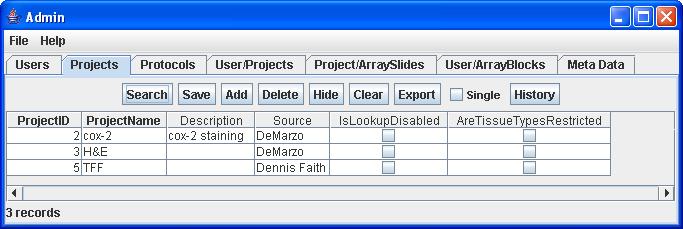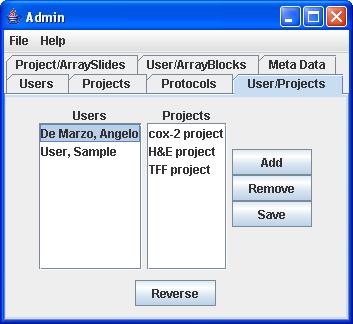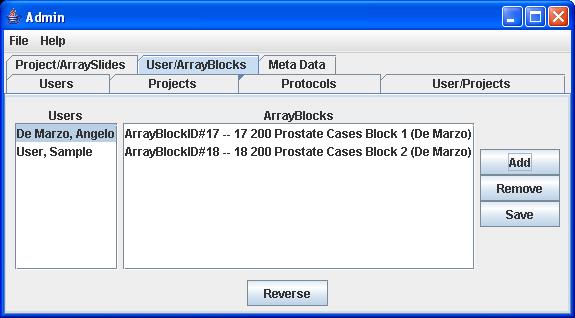Button Name
|
Description
|
Add
|
Add a type, field, or
enumeration. To add an enumeration, highlight the field to which
you want to add an enumeration. To add a field, highlight the
type you want to add the field to. To add a type, highlight the
section (Specimens, TissueDiagnosis, or ScoredImages) to where you want
to add the type.
Note: TissueDiagnosis & ScoredImages both use the same types
(TissueTypes). So adding, changing, or deleting a type on one is
equivalent to doing it to the other.
|
Edit
|
Give the highlighted entry a new
name. The highlighted entry may be either a type, field, or
enumeration. |
Delete
|
Delete the highlighted
entry. The highlighted entry may be either a type, field, or
enumeration. Note that this operation will fail if any data references this entry. Thus
this operation is relatively safe. For example, lets say you are
trying to delete a field called "Prostate Zone". The operation
will fail if the field has any enumerations. You must first
delete all the enumerations. Also, this operation will fail if
any outside data used this field to record some value. For
example, lets say some TissueDiagnosis has ProstateZone recorded and it
is set to "No Zone". There is no way to handle this from the
MetaData application. You must contact a database administrator
to delete these fields.
|
Enable
|
Enable the buttons Add, Edit,
and Delete, so that modifications can be made to the Meta Data.
You will be prompted for the application
password. This is not the same as your user
password. Contact a TMAJ administrator to give you this password.
|
Disable
|
disable the buttons Add, Edit,
and Delete. No one will be able to modify Dynamic Meta Data until
the Enabled button has been pressed.
|
Print
|
dump a description of the
Dynamic Meta Data in TMAJ to a text file.
|


